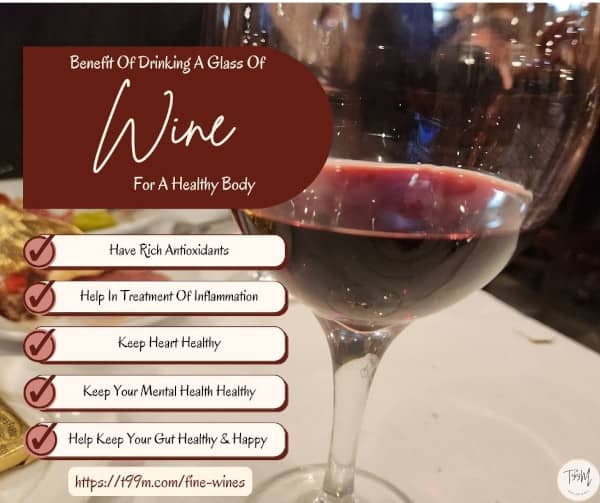Some of the most common wine terminology includes:
- Acidity – The tart and sour attributes in a wine which stimulate salivation and help cut through richness. Key acids are tartaric acid and malic acid.
- ABV – Stands for alcohol by volume, indicating the percentage of alcohol in the wine. Table wines range from about 11-15%.
- Balance – When the elements of wine – fruit, acid, tannin, alcohol, etc balance each other instead of standing out. A well balanced wine has harmony.
- Bouquet – The complex aromas that develop as a wine ages in the bottle, usually combining fruit, floral, spice, mineral and oak influences.
- Dry – A wine with very little residual sugar, perceived as unsweetened. The opposite would be sweet or off-dry wines.
- Estate Bottled – The grapes were grown on land owned or controlled by the winery, which made and bottled there as well.
- Legs – The viscous drips of wine that cling to the inside of the glass after swirling. Caused by alcohol and glycerin content.
- Oaky – Aromas and flavors imparted by oak barrels, like vanilla, clove, spice and toast. It can enhance aroma, texture and aging ability.
Some Common Wine Terminology and Terms Often Used in the World of Wine:
- Aeration – The process of exposing wine to air to enhance its flavors and aromas.
- Corked – A term used to describe a wine that has a musty or moldy smell, often due to a faulty cork.
- Decanting – Pouring wine from its bottle into another container to separate it from sediment and allow it to breathe.
- Dessert Wine – Sweet wines typically served with desserts or as a dessert themselves.
- Finish – The lingering taste and sensation after swallowing wine.
- Harvest – The process of picking grapes to make wine.
- Meritage – A term used for Bordeaux-style wines produced outside of Bordeaux.
- Nose – The aroma or bouquet of a wine.
- Palate – The overall taste and sensation of a wine in the mouth.
- Reserva/Reserve – A term indicating a wine of higher quality or longer aging.
- Sommelier – A trained and knowledgeable wine professional, often found in restaurants, responsible for wine selection and service.
- Tannins – Compounds in wine that contribute to its structure and astringency, often found in red wines.
- Terroir – The unique environmental factors (soil, climate, etc.) that influence the characteristics of a wine.
- Varietal – A wine made primarily from a single grape variety.
- Vintner – Someone involved in the production of wine, including grape growing and winemaking.
- Vintage – The year the grapes were harvested.
- Wine Cellar – A storage space for aging and preserving wine.
- Yeast – Microorganisms responsible for fermentation, converting sugars into alcohol and carbon dioxide.
- Zest – The outer, flavorful part of citrus fruit peel used to add aroma to wine.
- Élevage – The period during which wine is aged, typically in barrels or tanks.
And What is Wine Style?
When referring to wine style, we generally mean the methods and techniques used to produce the wine which shape its flavor profile and personality.
Some elements that contribute to wine style include:
- Aging – Extended lees aging and bottle maturation create more developed, complex styles.
- Body – The perception of weight and mouthfeel from alcohol, tannin levels, dry extract.
- Grape variety – Certain grapes like Chardonnay or Zinfandel impart definable aromas.
- Sweetness Level – How much residual sugar is left to determine if it is a dry, off-dry, or sweet wine.
- Terroir – The environmental conditions like soil, climate and landscape that influence grape character.
- Winemaking – Techniques of fermentation, aging vessels, etc. that shape the wine’s texture and flavors.
Some common wine style terminology includes:
Sparkling, still, light-bodied, full-bodied, bright, buttery, oaky, crisp, mineral-driven, fruit-forward, nutty, earthy, grassy, concentrated.
- Sparkling – These wines exhibit carbonation from a secondary internal fermentation or by trapping the CO2 produced during the primary fermentation. They contain either huge or delicate bubbles, depending on the production method.
- Still – A wine without any effervescence or bubbles. The majority of wines are still rather than sparkling.
- Light-bodied – These wines feel very light, nearly watery in weight and thin on the palate. Lower alcohol whites often fall into this style.
- Full-bodied – Big, rich, and concentrated wines that deliver a chewy mouthfeel and bold flavors. Often higher in alcohol or tannin from skins/stems. Reds frequently display this style.
- Bright – Wines with noticeable acidity that feel lively, zesty and energetic on the palate. Fresh citrus, tree and stone fruit flavors.
- Buttery – Rich texture and flavors reminiscent of melted butter or cream. Often from malolactic fermentation and aging in oak barrels. Classically California Chardonnay.
- Oaky (seen previously)- Undertones of sweet baking spice, smoke, toast and vanilla imparted by extended aging in oak barrels. Adds complexity and smoothness.



